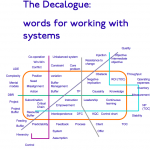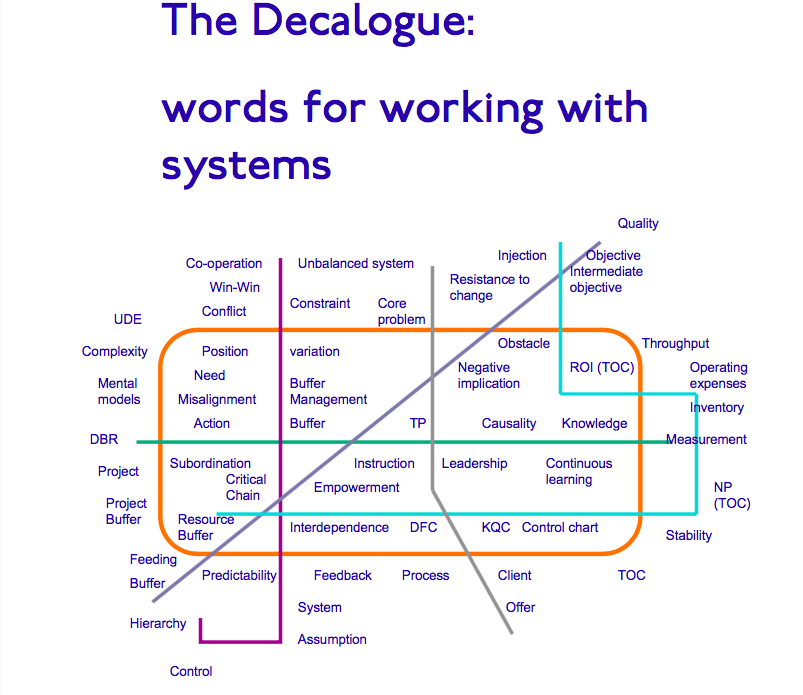What are the key terms that indicate how we can work within and on systems? How can we sum up in a ‘word map’ the field of knowledge that is required? We produced a word map to accompany our glossary for ‘The Decalogue’ methodology that encompasses the approaches of W. Edwards Deming and the Theory of Constraints. That was a few years ago. It’s time to add a new “line” to the map; since we produced it we have continued to evolve ‘The Decalogue’ and true to our scientific origins, we have looked to science for our basis. Here we look at some new terms to add to our word map.
Working with systems: Complexity, networks, emergence
Addressing complexity is probably one the greatest challenges of our times. The reason for the increasing importance of this issue is related to the exponential growth of interconnections and interdependencies that has arisen in contemporary society and organizations.
Science is unveiling the patterns of connections that exist at every level of our existence and technology provides us with unprecedented possibilities for integration and cooperation. However, the inherent non-linearity that governs the emergence of all the phenomena that we label as “complex” is still largely addressed with inadequate tools and methods.
Working with systems: Networks
Complexity, in the context of managing organizations, has two components that are strictly interconnected: the first is related to our increasing understanding of organizations as networks within networks; the more nodes and links there are in a network, the more complex it is. The second component concerns variation (the impossibility of repeating any process in exactly the same way). Variation is intrinsic to any human activity, and it strongly impacts the dynamic of the network, because the entropy of a closed system will always increase.
Working with systems: Network of projects
Philosophically and scientifically, the Decalogue methodology attempts to shift management from a mechanistic, Newtonian worldview in which the results of the whole organization equal the sum of its individual, separate and hierarchical parts, towards a systemic and interdependent network. The shift is achieved by combining the “reductionist” approach of the Theory Of Constraints with a systemic view based on interdependencies and interactions. It does so in practical terms by:
1. building interdependent processes managed through the control of variation;
2. subordinating these interdependencies to a strategically chosen element of the system called constraint;
3. designing the organization as a network of interdependent projects with a goal.
The field of management is in continuous flux in its attempts to adapt to the new challenges of complexity. All the more reason to adopt a systemic approach that embraces continuous improvement and innovation as a basis for sustainability.
Sign up to our blog here and shift your thinking towards broader, systemic possibilities for yourself and your organization.
About the Author
Angela Montgomery Ph.D. is Partner and Co-founder of Intelligent Management, founded by Dr. Domenico Lepore. She is co-author with Dr. Domenico Lepore and Dr. Giovanni Siepe of ‘Quality, Involvement, Flow: The Systemic Organization’ from CRC Press, New York. Angela’s new business novel+ website The Human Constraint looks at how the Deming approach and the Theory of Constraints can create the organization of the future, based on collaboration, network and social innovation.







Leave a Reply